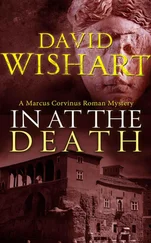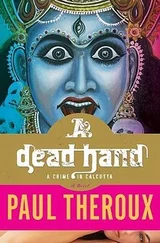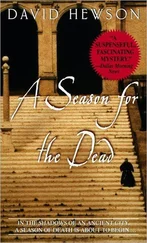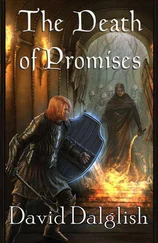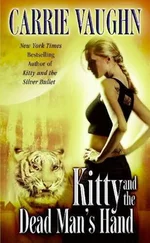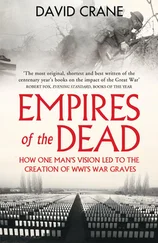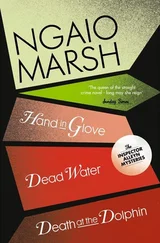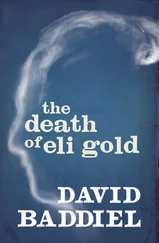34 Regis, p. 206, quotes from the final report of this test that a single weapon was calculated to have covered 2,400 square kilometers, or 926.5 square miles. British research had also shown that off-target releases by ship, plane or vehicle had considerable advantages over bursting munitions such as those envisioned during World War II.
35 Confidential source familiar with the British trial results.
36 Meselson was assisted by a researcher, Milton Leitenberg, who said in a communication with the author that the petition had origins in opposition to the use of the agents in the Vietnam War. Donald F. Hornig, “Memorandum for the President,” Dec. 8, 1966, LBJ Library, courtesy Meselson archive. On the military’s opposition, see Foreign Relations of the United States, 1964–1968 , Volume X: National Security Policy, Documents No. 173 and 178.
37 Richard D. McCarthy, The Ultimate Folly: War by Pestilence, Asphyxiation and Defoliation (New York: Knopf, 1970), p. 109.
38 NBC’s First Tuesday , on Feb. 4, 1969.
39 Robert A. Wampler, ed., “Biowar: The Nixon Administration’s Decision to End U.S. Biological Warfare Programs,” TNSA EBB 58, doc. 1. Also, Foreign Relations of the United States, 1969–1976, Vol. E-2 , Documents on Arms Control, 1969–1972, Part 3: Chemical and Biological Warfare; Geneva Protocol; Biological Weapons Convention.
40 Chemical and Bacteriological (Biological) Weapons and the Effects of Their Possible Use , Report of the Secretary-General, the United Nations, Department of Political and Security Council Affairs, New York, 1969.
41 “Health Aspects of Chemical and Biological Weapons,” Report of a WHO Group of Consultants, World Health Organization, Geneva, 1970; submitted to the Secretary-General of the United Nations, Nov. 28, 1969, p. 19.
42 Jonathan B. Tucker, “A Farewell to Germs: The U.S. Renunciation of Biological and Toxin Warfare, 1969–1970,” International Security , vol. 27, no. 1, Summer 2002, pp. 107–148. Also see Foreign Relations of the United States, 1969–1976 .
43 Kissinger Telephone Conversations, DNSA, Nov. 25, 1969, 12:30 P.M., and 6:30 P.M. National Archives, Richard Nixon Presidential Library and Museum, Henry A. Kissinger Telephone Conversation Transcripts (Telcons). Chronological File. Box 3. November 18–28, 1969.
44 H. R. Haldeman, The Haldeman Diaries (New York: G. P. Putnam’s Sons, 1994), p. 111.
45 William Safire, “On Language: Weapons of Mass Destruction,” The New York Times Magazine , April 19, 1998, p. 22.
46 Matthew Meselson, “The United States and the Geneva Protocol of 1925,” September 1969, Meselson personal archive. Jeanne Guillemin, Biological Weapons: From the Invention of State-sponsored Programs to Contemporary Bioterrorism (New York: Columbia University Press, 2005), p. 123. Also see BioEssays 25:12, pp. 1236— 1246, 2003.
47 White House science adviser Lee A. DuBridge said the President’s Science Advisory Committee recommended that the U.S. “renounce all offensive BW; stop completely the procurement of material for offensive BW; destroy existing stockpiles of BW agents and maintain no stockpiles in the future.” TNSA EBB 58, doc. 5. Also see “Averting the Hostile Exploitation of Biotechnology,” CBW Conventions Bulletin , Quarterly Journal of the Harvard Sussex Program on CBW Armament and Arms Limitation, issue no. 48, June 2000, pp. 16–19.
48 “HAK Talking Points, Briefing for Congressional Leadership and Press,” TNSA EBB 58, doc. 11.
49 Public Papers of the Presidents, 1969, pp. 968–1970.
50 Memorandum for the President, July 6, 1970, from Melvin Laird, Tab A, “Material to be destroyed (biological and toxin),” TNSA EBB 58, doc. 22.
51 Report to the National Security Council, U.S. Policy on Chemical and Biological Warfare and Agents, TNSA EBB 58, docs. 6a and 6.
52 Foreign Relations, 1969–1972, Vol. E-2 , “Minutes of NSC Meeting on Chemical Warfare and Biological Warfare, Nov. 18, 1969.”
53 Raymond L. Garthoff has offered a suggestion, which remains unproven, that U.S. disinformation persuaded the Soviets that the United States was continuing work on biological weapons after the Nixon decision. According to Garthoff, the FBI fed disinformation to the Soviets that the United States was undertaking a clandestine BW program. See Garthoff, “Polyakov’s Run,” Bulletin of the Atomic Scientists , vol. 56, no. 5, September/October 2000, p. 37. It is known there was a disinformation campaign for chemical weapons, which is described by David Wise in Cassidy’s Run: The Secret Spy War over Nerve Gas (New York: Random House, 2000). Details of a disinformation campaign on BW are not known.
CHAPTER 5: THE ANTHRAX FACTORY
1 Jonathan B. Tucker and Raymond A. Zilinskas, “The 1971 Smallpox Epidemic in Aralsk, Kazakhstan, and the Biological Warfare Program.” The paper includes “An Epidemiological Analysis of the 1971 Smallpox Outbreak in Aralsk, Kazakhstan,” by Alan P. Zelicoff, Sandia National Laboratories, pp. 12–21.
2 Burgasov later gave bogus explanations for the Sverdlovsk anthrax epidemic, saying it was caused by contaminated meat. However, his comments in this case seem worth examining; he would have known the truth at the time.
3 Yevgenia Kvitko, “Smallpox, Another Useful Weapon,” an interview with Pyotr Burgasov, Moscow News , no. 47, Nov. 21, 2001. Burgasov made several errors in the statement. He was wrong that there were no survivors. Also, the smallpox formula was not “developed” at the island, which was a testing site.
4 The British closed down their bioweapons program in the 1950s. For the British declaration of Aug. 6, 1968, see “The Problem of Chemical and Biological Warfare,” SIPRI, Vol. 4, CB Disarmament Negotiations, 1920–1970 , p. 255. For additional insights on the thinking, see “Cabinet, The Queen’s Speech on the Opening of Parliament,” Oct. 16, 1969, British National Archives, file FCO 66/297.
5 Foreign Relations of the United States, 1969–1972: Vol. E-2, Documents on Arms Control . The State Department transcribed portions of the following: National Archives, Nixon Presidential Materials, White House Tapes, with Kissinger, April 10, 1972, 12:44–1:06 P.M., Conversation No. 705–13, and with Connally, April 11, 1972, 3:06–5:05 P.M., Conversation No. 706–5. See http://www.state.gov/r/pa/ho/frus/nixon/e2/83722.htm .
6 Domaradsky, Biowarrior: Inside the Soviet/Russian Biological Warfare Machine (New York: Prometheus Books, 2003), p. 120.
7 James D. Watson, with Andrew Berry, DNA: The Secret of Life (New York: Knopf, 2003), Ch. 4.
8 Ken Alibek, with Stephen Handelman, Biohazard: The Chilling True Story of the Largest Covert Weapons Program in the World—Told from Inside by the Man Who Ran It (New York: Random House, 1999), p. 41.
9 Joshua Lederberg, ed., Biological Weapons: Limiting the Threat (Cambridge, Mass.: Belfer Center for Science and International Affairs, 1999), “Germs as Arms: Basic Issues,” Table 1.1, p. 4.
10 The formal title was the Interdepartmental Scientific-Technical Council for Molecular Biology and Genetics. Domaradsky said orders to begin this work were first given in 1971, the year before he came to Moscow. However, other evidence, including dates given by Alibek, suggests the decisions came later, in 1973–1974. Estimates vary on the precise size of the program. A document in Katayev estimates the main organization, Biopreparat, had thirty facilities and twenty-five thousand employees, but some of these may have been working on legitimate civilian projects. “Khim-Prom,” Katayev, Hoover, no date. Alibek, p. 43, says there were thirty thousand employees in Biopreparat, with sixty thousand in the biological weapons effort overall at the peak.
Читать дальше

